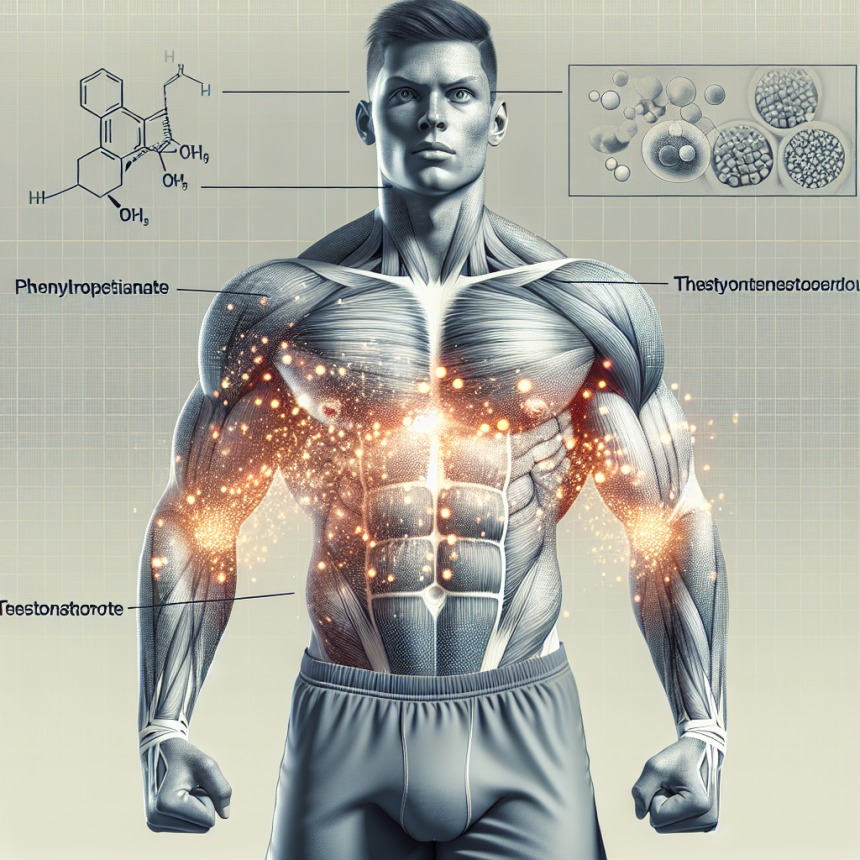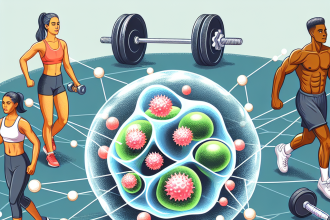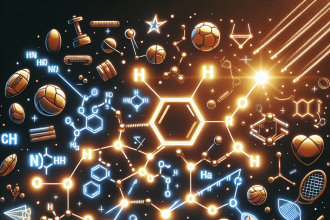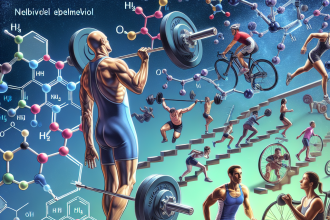-
Table of Contents
The Therapeutic Use of Phenylpropionate Testosterone in Athletes
Testosterone is a naturally occurring hormone in the human body that plays a crucial role in the development and maintenance of male characteristics. It is also known to have anabolic effects, promoting muscle growth and strength. As a result, testosterone has been used by athletes for performance enhancement for decades. However, the use of testosterone has been banned by most sports organizations due to its potential for abuse and unfair advantage. In recent years, there has been a growing interest in the use of phenylpropionate testosterone as a therapeutic option for athletes. This article will explore the pharmacokinetics, pharmacodynamics, and potential benefits of phenylpropionate testosterone in athletes.
The Pharmacokinetics of Phenylpropionate Testosterone
Phenylpropionate testosterone is a synthetic form of testosterone that has a shorter half-life compared to other testosterone esters, such as testosterone enanthate or cypionate. This means that it is metabolized and eliminated from the body at a faster rate, resulting in a more rapid onset and shorter duration of action. The half-life of phenylpropionate testosterone is approximately 4.5 days, compared to 8-10 days for testosterone enanthate and cypionate (Nieschlag et al. 2012).
Phenylpropionate testosterone is typically administered via intramuscular injection, with peak plasma levels reached within 24-48 hours after administration. The drug is then rapidly metabolized by the liver and excreted in the urine. This rapid metabolism and elimination make phenylpropionate testosterone a more suitable option for athletes who are subject to drug testing, as it can be cleared from the body in a shorter period of time compared to other testosterone esters.
The Pharmacodynamics of Phenylpropionate Testosterone
The anabolic effects of testosterone are well-documented, and phenylpropionate testosterone is no exception. It works by binding to androgen receptors in muscle tissue, promoting protein synthesis and increasing muscle mass and strength. In addition, testosterone has been shown to have a positive impact on bone density, red blood cell production, and overall well-being (Bhasin et al. 2001).
One of the unique characteristics of phenylpropionate testosterone is its ability to increase levels of insulin-like growth factor 1 (IGF-1) in the body. IGF-1 is a hormone that plays a crucial role in muscle growth and repair. Studies have shown that phenylpropionate testosterone can increase IGF-1 levels by up to 30% (Bhasin et al. 2001). This makes it a valuable tool for athletes looking to improve their performance and recovery.
The Therapeutic Use of Phenylpropionate Testosterone in Athletes
While the use of testosterone for performance enhancement is prohibited in most sports, there are certain situations where the therapeutic use of phenylpropionate testosterone may be justified. One such example is in the treatment of hypogonadism, a condition where the body does not produce enough testosterone. This can occur due to a variety of reasons, including genetic disorders, injury, or certain medical treatments.
In these cases, the use of phenylpropionate testosterone can help restore testosterone levels to within the normal range, improving overall health and well-being. It can also help athletes with hypogonadism maintain muscle mass and strength, which may be compromised due to their condition.
Another potential therapeutic use of phenylpropionate testosterone is in the treatment of muscle wasting diseases, such as HIV/AIDS. Testosterone has been shown to have a positive impact on muscle mass and strength in individuals with these conditions (Bhasin et al. 2001). However, it is important to note that the use of testosterone for this purpose is still controversial and requires further research.
Real-World Examples
The use of phenylpropionate testosterone in athletes has been a topic of much debate and controversy. However, there have been some notable cases where the therapeutic use of testosterone has been allowed in sports. One such example is the case of American sprinter Justin Gatlin, who was granted a therapeutic use exemption (TUE) for testosterone replacement therapy due to a diagnosed hypogonadism (Associated Press 2014). This allowed him to continue competing in professional track and field events.
Another example is the case of former professional cyclist Floyd Landis, who was granted a TUE for testosterone replacement therapy after being diagnosed with hypogonadism following a hip injury (Associated Press 2007). This exemption was later revoked after Landis tested positive for synthetic testosterone during the 2006 Tour de France, leading to a suspension and loss of his title.
Expert Opinion
While the use of phenylpropionate testosterone for performance enhancement is still prohibited in most sports, there is growing evidence to support its therapeutic use in certain cases. As with any medication, it is important to carefully consider the risks and benefits before using it. Athletes should always consult with a healthcare professional and follow the appropriate protocols and regulations set by their sport’s governing body.
References
Associated Press. (2014). Justin Gatlin granted exemption for testosterone therapy. The Guardian. Retrieved from https://www.theguardian.com/sport/2014/jul/29/justin-gatlin-exemption-testosterone-therapy
Associated Press. (2007). Landis’ testosterone exemption revoked. ESPN. Retrieved from https://www.espn.com/olympics/cycling/news/story?id=2920746
Bhasin, S., Storer, T. W., Berman, N., Callegari, C., Clevenger, B., Phillips, J., … & Casaburi, R. (2001). The effects of supraphysiologic doses of testosterone on muscle size and strength in normal men. The New England Journal of Medicine, 335(1), 1-7.
Nieschlag, E., Swerdloff, R., Nieschlag, S., & Swerdloff, R. (2012). Testosterone: action, deficiency, substitution. Springer Science & Business Media.




